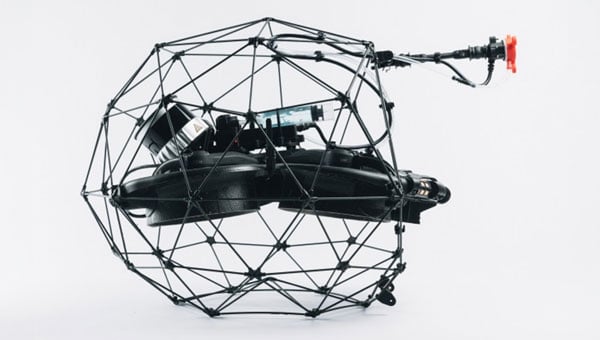Skyline PhotoMesh 3D: On-the-fly models while flying

During my tenure as the GIS manager for the Atlanta Regional Commission, I had the opportunity to work with many first responders, primarily police, fire and E911. I always promoted the capabilities of GIS to develop a common operational picture.
However, most first responders were not interested in becoming GIS experts, especially with traditional GIS software and ortho imagery. They just wanted easy and effective tools that would help them do their job better. Then Pictometry metric oblique imagery hit the scene. It was a game changer because it was easy to use and, most important, the oblique images provided a visual perspective that average users could grasp quickly. (See my 2008 column that explains why.)
Soon, 3D model creation and navigation became common. In my opinion, 3D models are just a more robust way of viewing oblique views. 3D models are becoming more commonplace, but generating those models is more time consuming and resource intensive.
A few of you may remember that four years ago, USSOCOM (U.S. Special Operations Command) had more than 20 — yes, 20 — different 3D model viewers. These were mostly proprietary systems from major contractors that required separate maintenance and support, and sometimes led to user confusion and delays, not to mention expense. USSOCOM appointed a team to evaluate and reduce the number of 3D viewers, and they got it down to two, with Skyline TerraExplorer being one of them.
Building on that 3D reputation, Skyline Software Systems recently developed a 3D model creation capability that puts easy and rapid model creation in everyone’s toolbox. PhotoMesh is Skyline’s new 3D model creation software designed to build photorealistic 3D models as a fully automated process using auto-triangulation (AT) of multiple aerial images. Skyline can provide 3D model creation as a service or provide the software so customers can do the model creation in-house.
Below is a screenshot of a sample model created using PhotoMesh from UAV video I shot. then geolocated by Remote GEO (see my February column). The below 3D model was processed locally by Skyline using a typical laptop, and the entire process was finished in under 35 minutes. However, if speed was critical, Skyline could generate the model in the cloud, with the whole process taking a minute or two.
Here is a quick overview video that will give you an idea of the system capability.
Live demo at GEOINT 2016
While I was at GEOINT 2016 this May, I had had the chance to talk to Steve Marks, the director of business development at Skyline. He gave me an excellent video overview of PhotoMesh.
Steve then provided additional detail in several aspects of PhotoMesh including:
- Operation in the cloud
- Operation in a disconnected environment
- PhotoMesh scalability
- The ability to work with geographic subsets
Other developers have come up with similar capabilities, but the Skyline system is the most robust I’ve seen, especially with the flexibility for very rapid model creation through the cloud or local creation in a disconnected environment. Additionally, unlike many other 3D model systems, the Skyline models do include trees and shrubs so viewshed and line-of-site analysis is very realistic and accurate.
How would it be used?
In actual use, I can envision first responders arriving at a scene. They could use legacy imagery such as Pictometry oblique images to build a historic as-built model. They could then launch UAV or manned aircraft and capture current geo-located video, selecting and processing images in PhotoMesh and getting back a current 3D model in minutes via the Skyline Cloud service.
In a disconnected environment, the models could be generated locally but at a slower pace. The 3D models would permit horizontal, vertical and angular measurements. Other analyses could include: line-of-sight and viewshed, determination of blast zones and shielding, overhead hazards such as power lines.
ince the system is so robust and easy to use, I can see it supplementing ortho and oblique imagery while providing a very user friendly common operational picture as well as very capable analytic tools.
Retiring soon
At age 70, I’m looking at real retirement later this year so I’m also looking for a relief. If you have an interest or know someone interested in taking over this monthly column, let me know. The folks at Geospatial Solutions and North Coast Media have been a pleasure to work with so I don’t want to leave without a replacement. You can email me at akalinski@gpsworld.com






















keep us updated about your product and send us a trial link
keep us updated about your product and send us a trial link